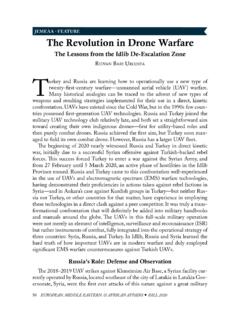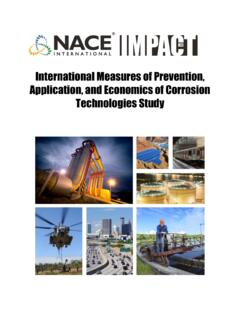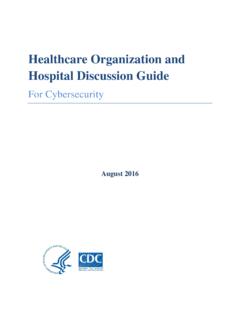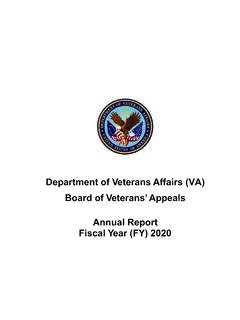Transcription of New Perspectives in Policing - Office of Justice Programs
1 New Perspectives in PolicingExecutive Session on Policing and Public SafetyThis is one in a series of papers that will be published as a result of the Executive Session on Policing and Public Safety. Harvard s Executive Sessions are a convening of individuals of independent standing who take joint responsibility for rethinking and improving society s responses to an issue. Membersare selected based on their experiences, their reputation for thoughtfulness and their potential for helping to disseminate the work of the Session. In the early 1980s, an Executive Session on Policing helped resolve many law enforcement issues of the day. It produced a number of papers and concepts that revolutionized Policing . Thirty years later, law enforcement has changed and NIJ and the Harvard Kennedy School are again collaborating to help resolve law enforcement issues of the day.
2 Learn more about the Executive Session on Policing and Public Safety at: , keywords Executive Session Policing , keywords Executive Session Policing V ER ITASHARVARD Kennedy SchoolProgram in Criminal JusticePolicy and ManagementNational Institute of JusticeM A R C H 2015 Measuring Performance in a Modern Police Organization Malcolm K. Sparrow Introduction Perhaps everything the modern police executive needs to know about performance measurement has already been written. But much of the best work on the subject is both voluminous and now more than a decade old, so there is no guarantee that today s police executives have read it. Indeed, it appears that many police organizations have not yet taken some of its most important lessons to heart.
3 I hope, in this paper, to offer police executives some broad frameworks for recognizing the value of police work, to point out some common mistakes regarding performance measurement, and to draw police executives attention to key pieces of literature that they might not have explored and may find useful. I also hope to bring to the police profession some of the general lessons learned in other security and regulatory professions about the special challenges of performance measurement in a risk-control or harm-reduction setting. A research project entitled Measuring What Matters, funded jointly by the National Institute of Justice (NIJ) and the Office of Community Oriented Policing Services (COPS Office ), led 2 | New Perspectives in Policing to the publication in July 1999 of a substantial collection of essays on the subject of measuring The 15 essays that make up that collection are fascinating, not least for the divergence of opinion they reveal among the experts of the day.
4 The sharpest disagreements pit the champions of the New York Police Department s (NYPD s) early CompStat model (with its rigorous and almost single-minded focus on reductions in reported crime as the bottom line of Policing ) against a broad range of scholars who mostly espoused more expansive conceptions of the Policing mission and pressed the case for more inclusive and more nuanced approaches to performance measurement. Three years later, in 2002, the Police Executive Research Forum (PERF) published another major report on performance measurement, Recognizing Value in Policing : The Challenge of Recognizing Police Performance, authored principally by Mark H. PERF followed that up in 2003 with a condensed document, The Bottom Line of Policing : What Citizens Should Value (and measure !)
5 In Police Performance,3 authored by Moore and Anthony Braga. Despite the richness of the frameworks presented in these and other materials, a significant proportion of today s police organizations seem to remain narrowly focused on the same categories of indicators that have dominated the field for decades: (a) Reductions in the number of serious crimes reported, most commonly presented as local comparisons against an immediately preceding time period. (b) Clearance rates. (c) Response times. (d) Measures of enforcement productivity ( , numbers of arrests, citations or stop-and-frisk searches). Cite this paper as: Sparrow, Malcolm K. Measuring Performance in a Modern Police Organization. New Perspectives in Policing Bulletin. Washington, : Department of Justice , N ational Institute of Justice , 2015.
6 NCJ 248476. A few departments now use citizen satisfaction surveys on a regular basis, but most do not. Clearance rates are generally difficult to measure in a standardized and objective fashion, so category (b) tends to receive less emphasis than the other three. Categories (c) and (d) response times and enforcement productivity metrics are useful in showing that police are getting to calls fast and working hard but reveal nothing about whether they are working intelligently, using appropriate methods or having a positive impact. Therefore, category (a) reductions in the number of serious crime reports tends to dominate many departments internal and external claims of success , being the closest thing available to a genuine crime-control outcome measure .
7 These measures have retained their prominence despite everything the field is supposed to have learned in the last 20 years about the limitations of reported crime statistics. Those limitations (which this paper will explore in greater detail later) include the following: Measuring Performance in a Modern Police Organization | 3 (1) The focus is narrow because crime control is just one of several components of the police mission. (2) The focus on serious crimes is narrower still, as community concerns often revolve around other problems and patterns of behavior. (3) Relentless pressure to lower the numbers, without equivalent pressure to preserve the integrity of the recording and reporting systems, invites manipulation of crime statistics suppression of reports and misclassification of crimes and other forms of corruption.
8 (4) Focusing on reported crime overlooks unreported crimes. Overall levels of victimization are generally two to three times higher than reported crime Particularly low reporting rates apply to household thefts, rape, other sexual assaults, crimes against youths ages 12 to 17, violent crimes committed at schools, and crimes committed by someone the victim knows (5) Pressure to reduce the numbers is counterproductive when dealing with invisible crimes (classically unreported or underreported crimes, such as crimes within the family, white collar crimes, consensual crimes such as drug dealing or bribery, and crimes involving intimidation). Successful campaigns against these types of crime often involve deliberate attempts to expose the problem by first driving reporting rates up, not (6) A focus on crime rate reductions does not consider the costs or side effects of the strategies used to achieve them.
9 (7) Emphasizing comparisons with prior time periods affords a short-term and very local perspective. It may give a department the chance to boast, even while its crime rates remain abysmal compared with other jurisdictions. Conversely, best performers (with low crime rates overall) might look bad when random fluctuations on a quarterly or annual basis raise their numbers. Genuine longer term trends may be masked by temporary changes, such as those caused by weather patterns or special events. More important than local short-term fluctuations are sustained longer term trends and comparisons with crime rates in similar communities. Pressure to beat one s own performance, year after year, can produce bizarre and perverse incentives.
10 (8) Even if crime levels were once out of control, the reductions achievable will inevitably run out eventually, when rates plateau at more acceptable levels. At this point, the department s normal crime-control success story assuming that reductions in reported crime rates had been its heart and soul evaporates. Some executives fail to recognize the point at which legitimate reductions have been exhausted. Continuing to demand reductions at that point is like failing to set the torque control on a power screwdriver: first you drive the screw, which is useful work; but then you rip everything to shreds and even undo the value of your initial tightening. The same performance focus that initially produced legitimate gains becomes a destructive force if pressed too hard or for too long.















